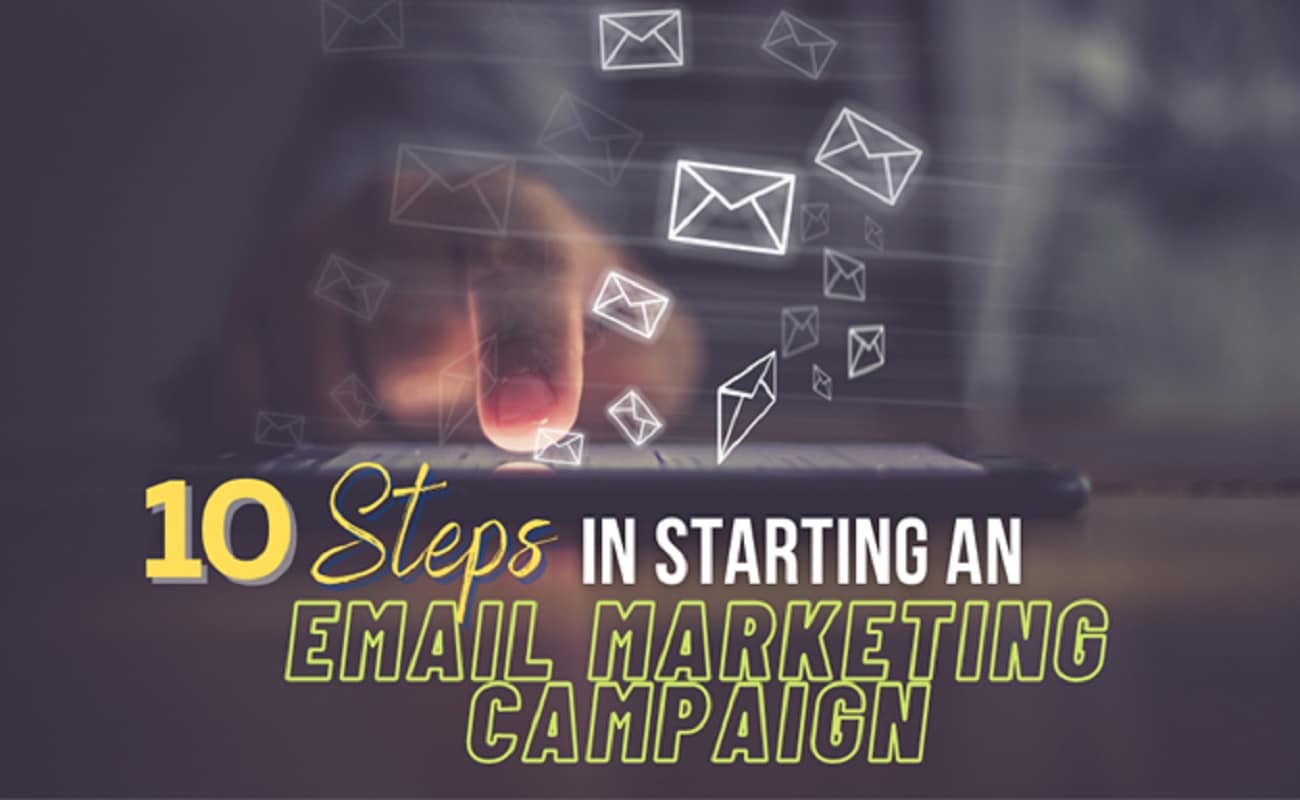Despite all of the technical advancements in advertising campaigns, email marketing remains a viable option. It may not be the most innovative or the most recent, but it may have the highest return on investment. Email marketing boasts a 4400% ROI compared with other digital marketing strategies, making it highly effective.
While doing strategies like social media, SEO, influencer marketing, and PPC are essential these days; email marketing should always remain your option. It can widen your reach, improve brand awareness and strengthen customer relationships. With the number of people using email in their day-to-day activities, this tactic can be your ticket to ensuring that your brand stays relevant to your desired audience.
Steps You Need To Take For Your Email Marketing Campaign
There is a lot of competition for your audience’s attention. With about 306.4 billion emails sent and received each day, you need to make sure you stand out in the crowd and capture your audience’s attention. That is why it is essential to learn how to do email marketing correctly. Otherwise, you will end up in the spam folder or never see again the light of day.
1. Identify Your Email Marketing Goals
Setting expectations is the foundation of all successful marketing, and email marketing is no exception. Consider what you aim to do before launching any email marketing strategy. Your campaign’s typical objectives include increasing interaction with your content and your brand, whether it is advertising a webinar or attempting to make an initial sale. You may also want to nurture current subscribers by offering content they can like or welcome new subscribers by reminding them about your company and ideals so you can begin to develop a relationship with them.
2. Understand Your Audience
If you’ve been doing email marketing for a while, you are already aware of who your target audience is. If you’re just starting, you’ll have to make some educated assumptions to target your market. You will begin by gathering information about your audience when you create your first campaign. It will give you accurate details to deal with the next time.
To learn more about your audience, use Google Analytics or your social media analytics. These sources provide information on demographics, place, and preferences, as well as a variety of other indicators that can provide you with an idea of who your clients are and what they are interested in.
3. Look For A Reliable Service Provider
If you are serious about email marketing, you must ensure that you tie-up with a reliable email marketing service provider. Working with a good service provider is the only way for the company to use email marketing automation to send messages to vast numbers of contacts or subscribers. These providers come with professional email templates, software to help you develop and maintain your email list. It also has monitoring functionality that shows you who opened your message and connected with your campaigns and messages.
4. Build Your Contact List
To begin an email list, you will have to establish contacts. Consider your clients and individuals with whom you already formed a connection. You can also start with just a few supportive friends and family members. The most effective email marketing strategies begin with a list of potential leads interested in what you have to say. Converting website users into subscribers is another most effective way to create a tailored email list.
Link your contacts to your email marketing account until you’ve created a contact list that you can send your messages to. You can also import contacts directly from a Gmail or Outlook account or exporting a contact list from an existing spreadsheet. Organize your recipients into different lists depending on what you know about them.
5. Plan Your Messages
Planning your messages or email content will provide you with a framework to work from as you begin producing your email campaign. Sending so many emails, on the other hand, can overload your subscribers. Don’t be scared to use a poll or survey to solicit subscriber feedback on email scheduling. You should also have an “opt-out” alternative for those who like your emails but don’t want to receive them as often. Carefully planning your email marketing tactic can bring you success.
6. Create An Appealing Subject Line
The subject line is a good starting point for any effective email marketing strategy. It plays a critical role in getting people to read and click on your newsletters. Like the title on your blog post, an email subject line must catch the reader’s eye and entice them to read on. You also don’t have many words to make an impression; most subject lines vary from 41 to 50 characters. Since mobile device screens show far less of your subject line, it’s best to put the most exciting bits first.
Your subject line is visible to your subscribers right before they open your mail. People would be unable to resist opening if you make a decent first impression. If you write anything uninteresting, they will dismiss your message without giving it a second thought. You can pique people’s interest by posing a convincing question, mentioning a deadline, or just teasing your post.
7. Find The Best Time To Send Your Email
When you’re about to send out an update, timing is crucial. Every audience is unique, and the right time to send your email material can vary depending on who is on your email list. Based on customer feedback, gather some data on which day and time could be better for your business. You can also create and adhere to a consistent sending plan. If you send out a newsletter every first of the month, your audience will expect it in their inboxes. You must note that consistency is also crucial in finding the best time to send your email.
8. Make A Compelling Copy
Keep your email marketing copy brief, and stop pitching your deal too much. You want people to be at ease first. Do this by addressing subscribers by their first names. Personalized emails are more efficient. Personalize emails depending on use by submitting emails that satisfy various consumer needs. That makes them more targeted and likely to succeed. Segmenting your audience will increase your email click-through rate by up to 50%.
Use compelling content that can provide value to your audience. Use easy-to-read lines and make
sure your copy is not overcrowded. Use professional images that can help capture the interest of your audience. You can also incorporate video content that you can craft with video editing software you can find in the market today.
9. Provide CTA
The Call-To-Action or CTA is the final section of your email marketing copy. Your CTA represents the one thing you want people to do after reading your email. CTAs are usually repeated in every email marketing copy. Though you don’t want to pitch readers too much, you can effectively place a CTA at the beginning, center, and end of your copy. The most effective calls to action are brief and direct to the point. If you’ve written good copy, it should be a no-brainer for subscribers to visit your page, sign up to become a subscriber, or join your promotional activity.
10. Test And Track Your Email
Test your email campaign and keep track of email analytics from your service provider. That will allow you to determine what works and what doesn’t with your campaign.
All of this information is useful, and you can use it to understand your users and campaign results better. You may also use Google Analytics in addition to the email management tool. This free will allow you to see the traffic driven to your website via email and the actions of that traffic on your blog. You can use this data to address some concerns regarding the success of your email campaigns.
Final Thoughts
Remember that sending your email is just the first step toward email marketing progress. To truly nail it, you must gather data to strengthen future campaigns. That includes design and layout, content, subject lines, and compelling CTA. Consider testing emails of various segments as well as knowing the right time to send your email. A strong email marketing campaign is a watershed moment for every business. With a good approach, your business can generate more webpage visits, quality leads, and conversion, allowing you to meet your overall marketing targets.
About Author: Maricar worked as a marketing professional for almost a decade and handled concerts, events and community service-related activities. Leaving her corporate job for good to pursue her dreams, she has now ventured in the path of content writing and currently writes for Softvire Australia and Softvire New Zealand. A Harry Potter fan, she loves to watch animated series and movies during her spare time.




One thought on “10 Steps in Starting an Email Marketing Campaign”
What Are the SEO Business Best Practices?
SEO Best Practices: A Guide to Boost Your Website’s Visibility in 2025